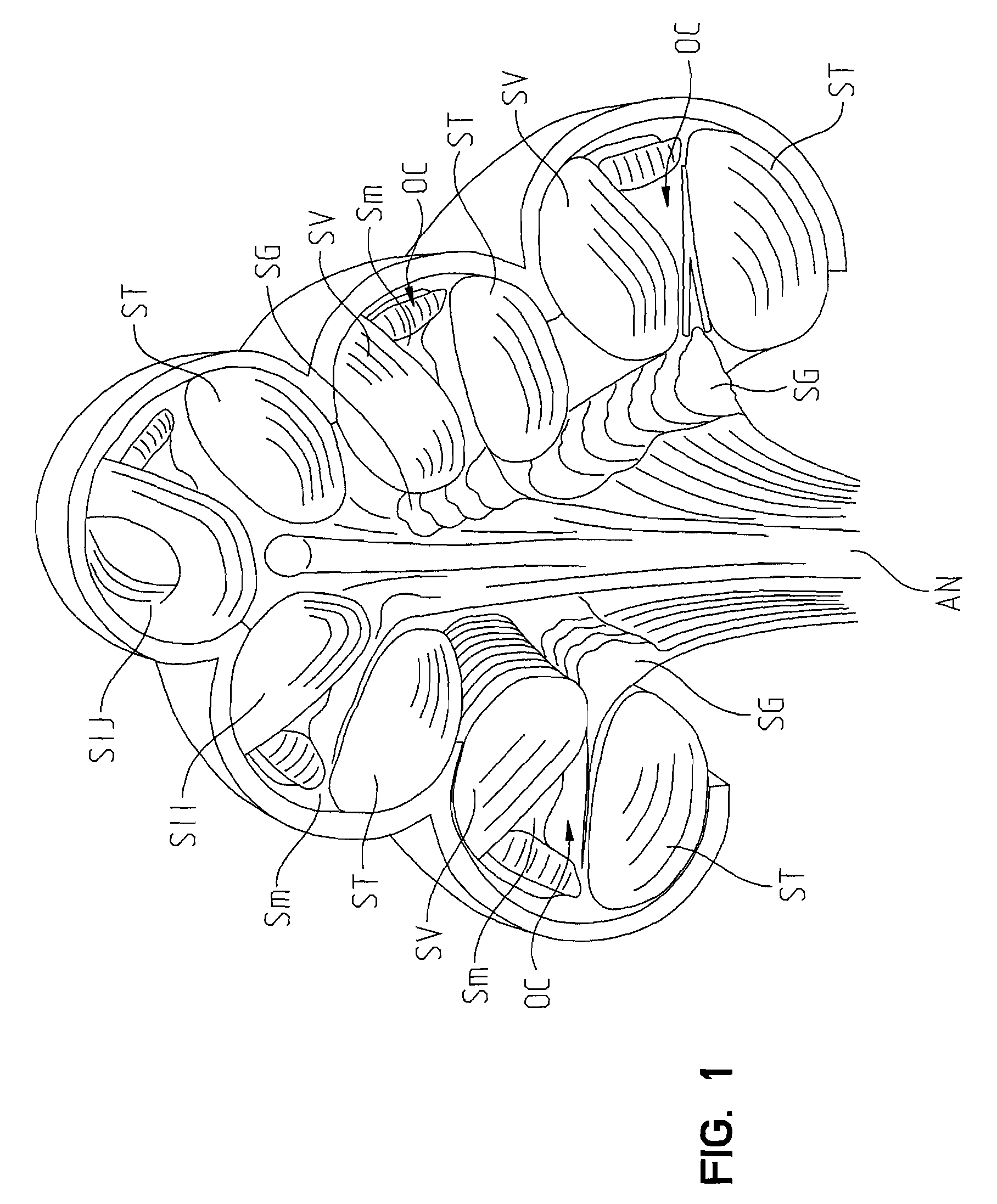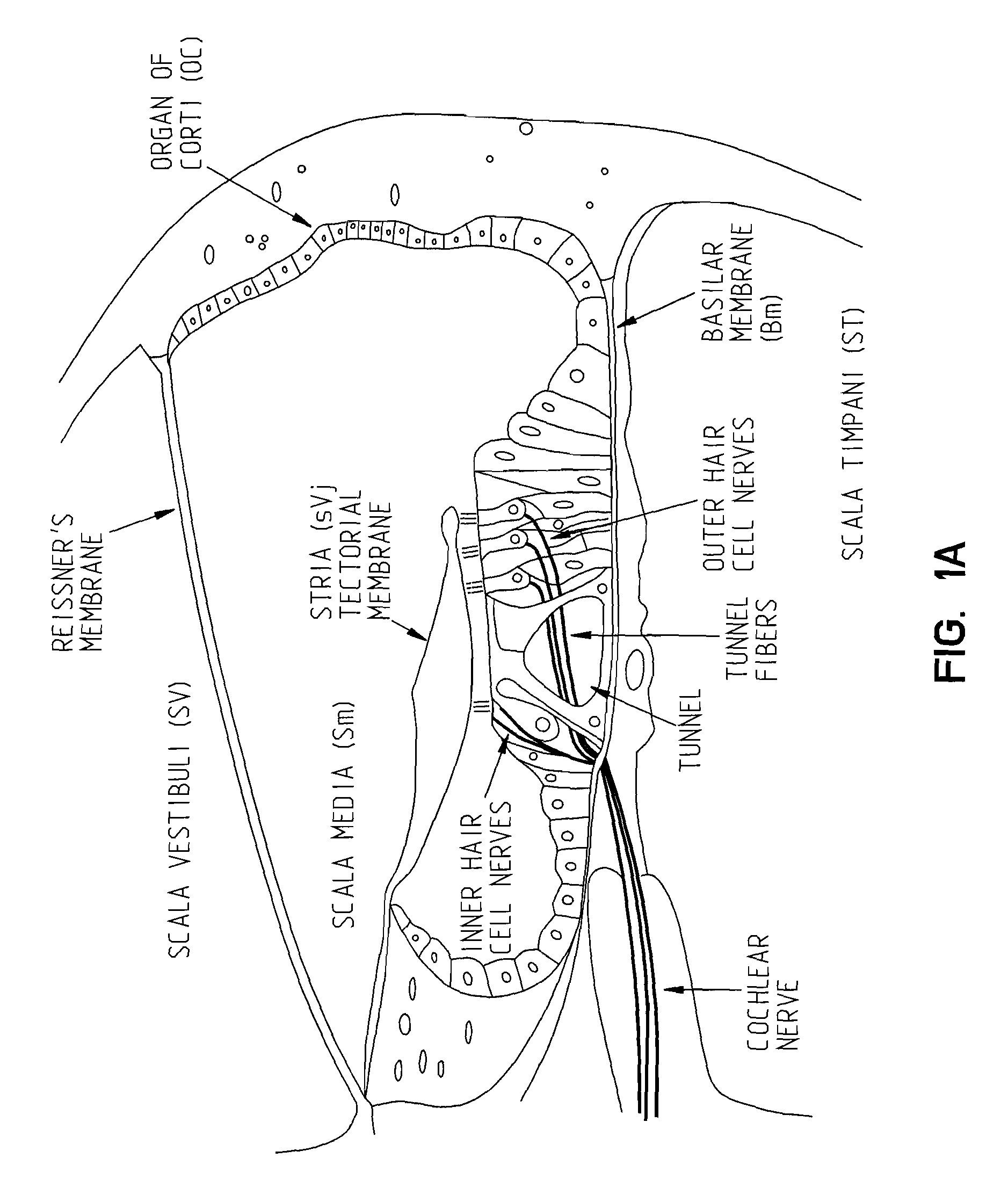Intracochlear Nanotechnology and Perfusion Hearing Aid Device
a hearing aid and nanotechnology technology, applied in the field of intracochlear hearing aid devices, can solve the problems of inability to convert mechanical energy into electrical energy, poor result of cochlear implants, and often destroyed anatomy within cochlear ducts
- Summary
- Abstract
- Description
- Claims
- Application Information
AI Technical Summary
Benefits of technology
Problems solved by technology
Method used
Image
Examples
Embodiment Construction
[0040]A schematic view of the intra-cochlear implant system 300 of the present invention is shown in FIG. 4, it being understood that the view in FIG. 4 is drawn highly schematically to acquaint the user with the primary components of the device.
[0041]The implant system 300 includes an intra-cochlear implant 302 that is designed for implantation preferably within the scala tympani ST of the cochlea, although it may also be placed with the scala vestibuli SV or scala media (also known as the cochlear duct) SM of the cochlea. In FIG. 4, the implant 302 is placed within the scala tympani ST. The implant 302 comprises a body portion 301 comprised of a bundle of electrodes that includes a large number of individual electrodes, as represented by electrode 304 for conducting a signal to an internal area of the scala tympani ST that is preferably adjacent to the hair-like nerve endings NE of the Cochlea, Organ of Corti OC, and spiral ganglion cells of the cochlea. The body 301 has a primary...
PUM
 Login to View More
Login to View More Abstract
Description
Claims
Application Information
 Login to View More
Login to View More - R&D
- Intellectual Property
- Life Sciences
- Materials
- Tech Scout
- Unparalleled Data Quality
- Higher Quality Content
- 60% Fewer Hallucinations
Browse by: Latest US Patents, China's latest patents, Technical Efficacy Thesaurus, Application Domain, Technology Topic, Popular Technical Reports.
© 2025 PatSnap. All rights reserved.Legal|Privacy policy|Modern Slavery Act Transparency Statement|Sitemap|About US| Contact US: help@patsnap.com



